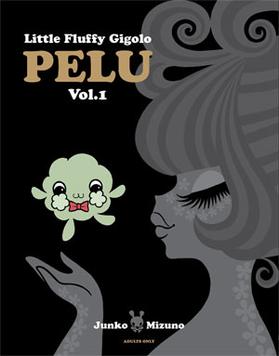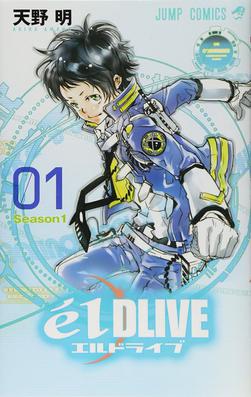You can help expand this article with text translated from the corresponding article in Japanese. (May 2011)Click [show] for important translation instructions.
|
This article needs additional citations for verification .(March 2012) |
Related Research Articles

Doraemon (ドラえもん) is a Japanese manga series written and illustrated by Fujiko F. Fujio. The manga was first serialized in December 1969. Its chapters were collected in 45 tankōbon volumes published by Shogakukan from 1974 to 1996. The story revolves around an earless robotic cat named Doraemon, who travels back in time from the 22nd century to aid a boy named Nobita Nobi.

Fujiko Fujio was a manga writing duo formed by Japanese manga artists Hiroshi Fujimoto and Motoo Abiko. Professional debut in 1951. Used the Fujiko Fujio name from 1953 until dissolution of the partnership in 1987, upon Fujimoto's illness. The pair was best known for their popular comedies, including Obake no Q-Tarō, Ninja Hattori-kun, Kaibutsu-kun, and Doraemon, the main character of which is officially recognized as a cultural icon of modern Japan. Some influences of most of their projects are the many works of acclaimed manga artist Osamu Tezuka and some cartoons and comic books—including the works of Hanna-Barbera.

UFO Baby is a Japanese manga series written and illustrated by Mika Kawamura. The manga was serialized by Kodansha in Nakayoshi from February 1998 to March 2002, and the chapters were collected into nine tankōbon volumes. It was adapted into a 78-episode anime television series produced by NHK, animated by J.C.Staff, and directed by Hiroaki Sakurai, which was broadcast between March 2000 and February 2002 on NHK's BS2 broadcast satellite network. The series was one of the top-rated anime series during its initial broadcast.

Kiteretsu Daihyakka is a Japanese manga series by duo Fujiko Fujio and later Fujiko F. Fujio, which ran in the children's magazine Kodomo no Hikari from April 1974 to July 1977. The manga was later made into a 331-episode anime television series that ran on Fuji TV from 27 March 1988 to 9 June 1996. The series was licensed for Spain by LUK Internacional under the title of "Kiteretsu, el primo más listo de Nobita".

Obake no Q-Tarō is a Japanese manga series by Fujiko Fujio and later Fujiko F. Fujio about the titular obake, Q-Taro, who lives with the Ōhara family. Q-Tarō, also known as "Q-chan" or "Oba-Q", is a mischief-maker who likes to fly around scaring people and stealing food, though he is deathly afraid of dogs.
Magic User's Club is a magical girl/boy anime created by Triangle Staff and Junichi Sato. It was first released as a six-part OVA in 1996 and then a 13-episode TV series in 1999, which was broadcast by WOWOW, and then by the anime television network Animax across its respective networks worldwide, including Southeast Asia, South Asia and other regions. Produced by Bandai Visual, the series is directed by Sato, with Chiaki J. Konaka handling series composition for the TV show, Ikuko Itoh designing the characters and Michiru Ōshima composing the music. There were also two manga series made, a shōjo manga version by Tami Ōta and shōnen manga version by Satomi Akai.

Parasol Henbē is a Japanese multimedia franchise created by Fujiko Fujio A. A manga series was published in Kodansha's Hero Magazine from the October 1989 to the January 1991 issues, with its chapters collected in two tankōbon volumes. A 200-episode anime television series, produced by Studio C&D, was broadcast on NHK from October 2, 1989, to January 12, 1991.

Perman is a Japanese manga series written and illustrated by the manga artist duo Fujiko Fujio about a clumsy boy, Mitsuo Suwa, who is chosen to apprentice to a powerful superhero to save the world along with other superheroes. The manga series was serialized in Weekly Shōnen Sunday in 1967. The first anime series was first produced in black and white in 1967. The second anime series was made in color in 1983 and films were released in 1983, 1984, 1985, 2003 and 2004. Perman is currently being telecasted on the Super Hungama channel in India.

Mami the Psychic is a manga series created by Fujiko F. Fujio in 1977 and serialized in Shōnen Big Comic. It tells stories about Mami, a middle schoolgirl who one day finds out she has various psychic powers, and how she uses them to help people.

Ichiban Ushiro no Dai Maō, also known as Demon King Daimao, is a Japanese light novel series written by Shōtarō Mizuki and illustrated by Souichi Itō, published by Hobby Japan under their HJ Bunko imprint. The first volume was published on February 1, 2008, and was completed with a total of 13 volumes available on March 29, 2014. A manga adaptation began monthly serialization in the September 2008 issue of Akita Shoten's magazine Champion Red, and a 12-episode anime adaptation by Artland aired between April and June 2010 on Tokyo MX and other channels.

Doraemon is the first anime TV series based on Fujiko F. Fujio's manga of the same name. It was produced by Nippon TeleMovie Productions. It aired from April 1, 1973, to September 30, 1973. After the anime ended, Doraemon remained exclusively a manga after its reruns until 1979 when Shin-Ei Animation produced a more successful second anime adaptation, which officially ended in 2005; it was in turn replaced by a third anime adaptation shortly after which continues to air to recent days. The series is now considered as a piece of lost media due to its rarity and obscurity. Of the 52 segments, only 20 are known to survive in their complete form, with 4 other segments surviving in a near complete state.

Little Fluffy Gigolo Pelu is a three tankōbon manga series written and illustrated by Junko Mizuno and published by Enterbrain. The series has been licensed in North America and France where the first volume received mostly positive reviews.

Chimpui is a Japanese manga created by Fujiko F. Fujio in 1985. It tells the story of two cute aliens that come to Earth to find the girl who will marry their prince of planet Mahl and find one in a sixth grade girl named Eri. It was subsequently adapted into an anime television series.

Ultra B is a manga series by Fujiko Fujio A that first made its debut in Chuokoron-Shinsha's Fujiko Fujio Land series of tankōbon books in 1984 and was released in individual tankōbon until 1989. In 1987, the manga was adapted into a 120-episode anime of the same name by Shin-Ei Animation which aired on TV Asahi from 4 April 1987 to 27 March 1989.

The Laughing Salesman is a Japanese manga series created by Fujiko Fujio A. The manga "The Black Salesman" began as a one-shot manga in Shogakukan's Big Comic magazine on 1968, later serialized in Jitsugyo no Nihon Sha's Manga Sunday magazine from 1969 to 1971. The manga tells the story of a salesman named Moguro Fukuzou, whose job is to help people fill gaps in their soul. In reality, he often ruins the lives of his clients if they do not follow his strict instructions or if they betray his trust.

Jungle Kurobe is a children's anime series by Fujiko Fujio.

Beyblade Burst is a Japanese manga and toyline created by Hiro Morita, based on Takara Tomy's Beyblade franchise. The third incarnation of the franchise after the Metal Fight series, the Beyblade Burst toyline launched on July 15, 2015, while the original manga was serialized in Shogakukan's children's manga magazine CoroCoro Comic from August 2015 to December 2021 and is compiled into twenty tankōbon volumes. Shogakukan's South East Asian branch began publishing it in English in April 2017.

Ēldlive is a Japanese manga series by Akira Amano. It started serialization via Shueisha's online app Jump Live in August 2013, switching to the digital publication Shōnen Jump+ after it launched in September 2014. It has been collected in eleven tankōbon volumes. The first three chapters were published in English by Viz Media in 2014. A 12-episode anime television series adaptation by Pierrot aired between January and March 2017.

Rainbow Sentai Robin is an anime and manga created by Shotaro Ishinomori. It is the first anime to feature a 5-unit superhero team. While the animation was produced by Toei Animation, it was also technically produced by Ishinomori's studio, Studio Zero, that he founded with Fujiko F. Fujio and Shinichi Suzuki. The series was also broadcast in Germany, Spain, and France. Hayao Miyazaki was a key animator on episodes 34 and 38.
21 Emon is a Japanese manga series written and illustrated by Fujiko Fujio, published from 1968 to 1969 in the Shogakukan magazine Weekly Shōnen Sunday. Set in the same universe as Doraemon, and predating that work by only one year. The manga was then made in a TV anime series by the animation studio Shin-Ei Animation in 1991. From the manga also two animated films were made: 21 Emon: Uchū e Irasshai! and 21 Emon: Uchū Ike! Hadashi no Princess. The official English name is 21 Emon: The 21st Century Kid.
References
- ↑ "Mojacko". Enoki Films USA. March 16, 2005. Archived from the original on March 16, 2005. Retrieved August 26, 2019.
- ↑ "Junko Iwao".
External links
- Mojacko (anime) at Anime News Network 's encyclopedia
| Mojacko | |
 Volume 1 of the Mojacko manga. | |
| モジャ公 (Moja-kō) | |
|---|---|
| Genre | Comedy, Fantasy, Sci-fi |
Fujiko Fujio's major works | |
|---|---|
| Collaboration |
|
| Fujimoto (Fujiko F. Fujio) | |
| Abiko (Fujiko Fujio A) | |